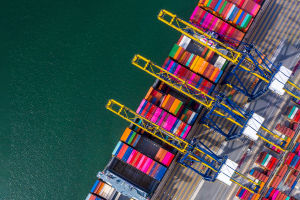In recent years, power shortages have been a major problem in South Africa. The root cause of this issue is the country's reliance on a relatively single energy structure, with a high dependence on coal for energy supply and power generation.
The national power company, ESKOM, supplies 95% of South Africa's electricity consumption.
During periods of peak electricity consumption, South Africa has to implement short-term load-shedding measures, which involve temporarily cutting off power when electricity consumption exceeds the distribution capacity. This practice has had a certain impact on the daily lives and economic development of the country.
To address the electricity crisis, the South African government has implemented several initiatives to promote a shift in the country's energy mix. One such initiative is the Integrated Resource Plan (IRP), which is a long-term energy plan aiming to increase the proportion of renewable energy in South Africa's energy mix and reduce reliance on coal-fired power plants.
The plan emphasizes the development of wind power and solar power, with a target of adding 29,000 MW of installed power by 2030. Of this total, wind power and photovoltaic power generation will contribute a combined 20,400 MW, accounting for approximately 70% of the installed capacity.
Another initiative, the Independent Power Producer Program (IPP), encourages private sector investment in renewable energy projects by allowing private producers to sell excess power to the national grid. This program has been successful in attracting significant investment in the renewable energy sector, resulting in over 6,000 MW of installed renewable energy capacity connected to the grid as of 2022.
In addition, the South African government has implemented various energy efficiency programs. These include the establishment of energy efficiency standards for buildings and appliances, as well as public awareness campaigns to promote energy-efficient practices at the community level.
According to the International Energy Agency, South Africa's installed solar capacity was 1,329 MW in 2016. By the end of 2021, the total installed capacity of solar PV systems in South Africa had reached 3.7 GW, according to the South African Photovoltaic Industry Association (SAPVIA). The government has set a target of 18.2 GW of renewable energy capacity by 2030, with a significant portion coming from solar PV systems.
Thanks to a series of incentives introduced by the South African government to promote the use of renewable energy, solar systems have experienced rapid development in the country.
In South Africa, grid-connected systems, off-grid systems, and hybrid systems are common types of solar systems. Residential customers typically opt for grid-connected solar systems, which allow excess electricity generated by the solar panels to be sold back to the national grid. Off-grid systems and hybrid systems are more prevalent in remote areas where grid access is limited or unavailable.
For commercial customers, hybrid solar systems are often chosen. These systems combine solar power with battery storage and grid connection, enabling businesses to reduce their reliance on the national grid and improve energy security.
Our field research in South Africa has also revealed that solar water heating is highly popular, particularly in residential areas. The South African government actively encourages the use of solar water heaters as an effective means of reducing energy consumption and lowering electricity bills.


